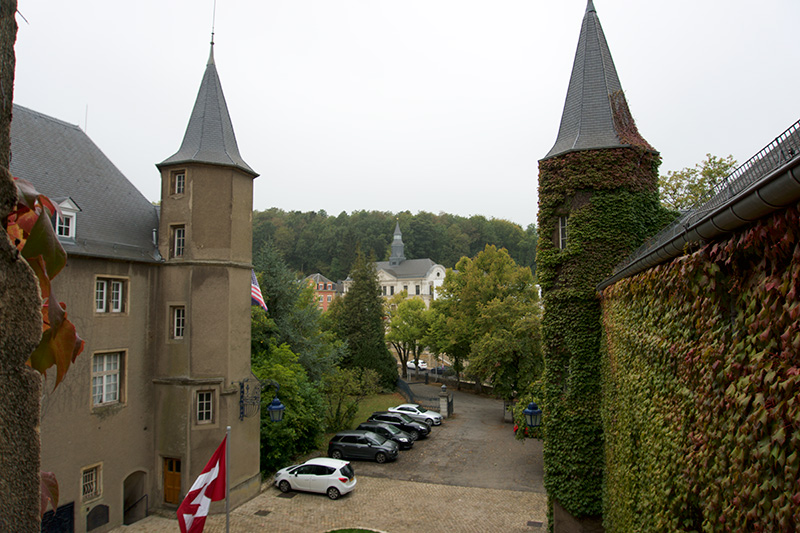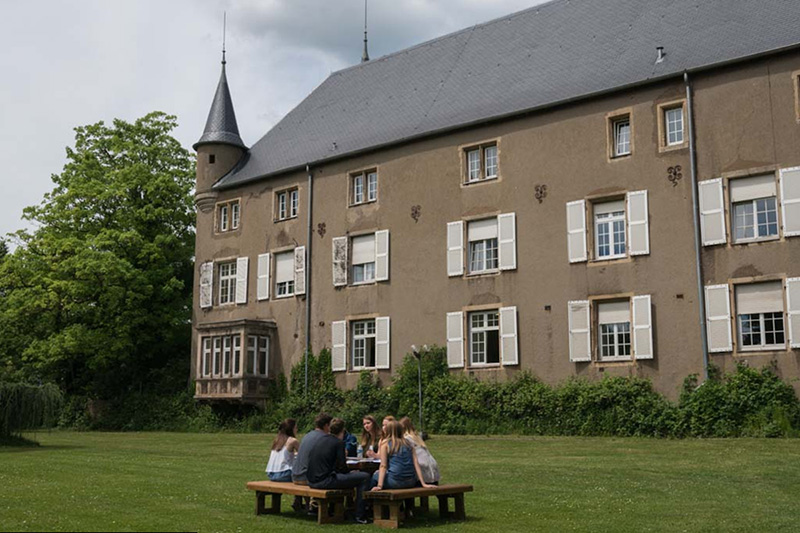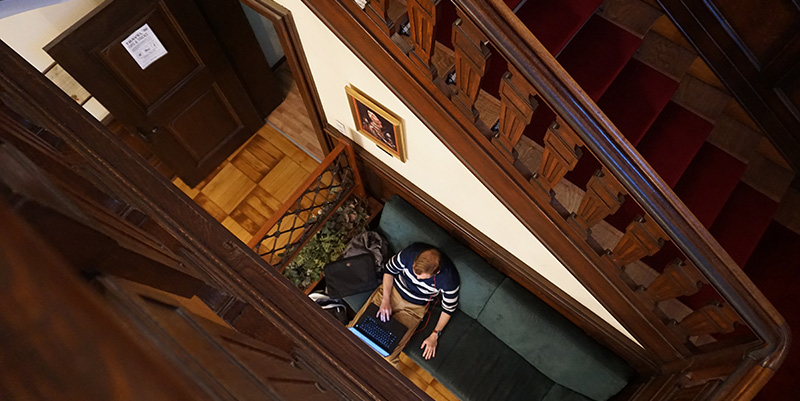

Celebrating 50 years in Luxembourg, Miamians honor the study abroad tradition
Advancing global knowledge
The experience of two world wars and the dramatic social upheaval in the 1960s convinced many that global peace and understanding should be advanced through study abroad.
Charles Ray Wilson, Provost of Miami University, was committed to expanding the global outlook of Miami and offering the students greater international opportunities.
The idea for Miami's European Center was conceived by Wilson and a small group of committed administrators and faculty
These Miamians had experienced the joy and enrichment of living and studying abroad and wanted to create a similar opportunity for Miami students.

Luxembourg's location gives students a unique multicultural experience.
As a weeklong celebration of the 50th anniversary of the Miami University John E. Dolibois European Center begins, it’s interesting to note that the center might have been located in another country.
In 1968, Miami was considering launching its international program in different locations like Japan, Switzerland, France, and Austria, but it was alumnus John Dolibois who made the case for his homeland.
He was the U.S. Ambassador to Luxembourg. Upon his return to Miami to serve as alumni secretary and later vice president, he touted Luxembourg’s unique location, culture
Luxembourg is a European crossroads
It is a small country landlocked by its larger neighbors, making it a sort of European crossroads that’s rich in culture and diversity. Luxembourgers speak a variety of languages, including Luxembourgish, French, German and English, with the country itself allowing easy travel to Belgium, France
Almost without exception, students view their experience in Luxembourg to be among the most formidable and outstanding of all their years in college. In fact, they said, “After Luxembourg, you’ll never be the same again.”
Initially called the European Center, the center moved to Luxembourg City in 1982. In 1988, Miami University’s board of trustees voted to change the name of the center to its current name, the Miami University John E. Dolibois European Center (MUDEC). Learn more about its history in an online timeline.
Miami ranks No. 3 for ungergraduate participation in study abroad programs.
Miami one of top universities for study abroad participation
Much of Miami’s success with study abroad programs can be attributed to the strong precedent put in place at the Luxembourg center. Fifty years since its inception, more than 11,500 Miami students explored the country’s multilingual and multicultural society.
Miami University continues to be one of the top universities in the nation for the number and percentage of students who earn credit abroad. Learn more about study abroad opportunities at Miami.
Among public, doctoral institutions, Miami ranks No. 3 for undergraduate participation in study abroad at 46.3 percent.
Miami is No. 25 among all U.S. institutions for the total number of students who studied abroad in the 2015-2016 academic year, per the Open Doors 2017 report, released Nov. 13 by the Institute of International Education.
More than 700 MUDEC alumni will commemorate the golden anniversary with a week of activities at the center Oct. 7-12.
Looking to the future
Dean Thierry Leterre wants to establish a Miami University American Cultural Center in Luxembourg, something lacking in the region.
"I thought that this would not only be a great project in itself, but could also be an incomparable teaching and immersion opportunity for our students, he said. "The idea is that the Miami University American Cultural Center should be mainly run by students, who would manage the budget, extend invitations, build projects, offer conversational classes in English, and more. I believe the students' creativity will take us to the next step."

